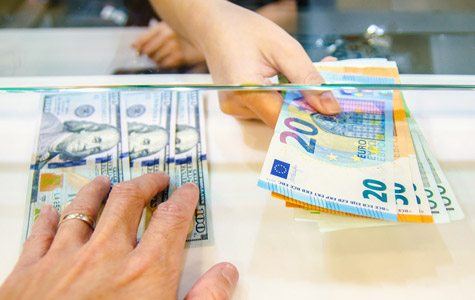Introduction
Currency exchange is a fundamental pillar of the global economy, serving as the mechanism through which different nations and businesses conduct international trade and investment. This intricate process involves the conversion of one currency into another at an agreed-upon rate. The currency exchange market, also known as the foreign exchange (forex) market, is the largest and most liquid financial market in the world. This article delves into the dynamics of currency exchange\, highlighting its significance, key players, influencing factors, and the risks associated with it.
The Significance of Currency Exchange
Currency exchange plays a pivotal role in facilitating international trade and investment. As businesses expand globally, they engage in transactions denominated in foreign currencies. This necessitates the conversion of their home currency into the target currency, a process that exposes them to the dynamics of exchange rates. Moreover, individuals seeking to travel or invest overseas also require currency exchange services to access the local currency. The efficiency and accuracy of these transactions impact the overall health of the global economy.
Key Players in the Currency Exchange Market
- Commercial Banks: Commercial banks are significant players in the currency exchange market, providing services to both retail customers and businesses. They offer a range of products, from simple currency conversion to complex hedging solutions that help mitigate exchange rate risks.
- Central Banks: Central banks influence currency exchange rates through monetary policy decisions. By adjusting interest rates and conducting open market operations, central banks aim to stabilize their country’s currency value and ensure economic stability.
- Investors and Speculators: Currency exchange presents opportunities for investors and speculators to profit from fluctuations in exchange rates. Forex trading involves buying one currency while simultaneously selling another, capitalizing on anticipated shifts in value.
- Multinational Corporations: Multinational companies with operations across various countries actively participate in the currency exchange market. They often engage in hedging strategies to protect their profits from adverse exchange rate movements.
The Essence of Telegraphic Transfers
A telegraphic transfer is a method of electronically transferring funds from one individual or entity to another across international borders. Also known as a “wire transfer,” it involves the electronic transmission of money instructions from the sender’s bank to the recipient’s bank. This process ensures a swift and secure movement of funds, making it a preferred choice for a variety of cross-border transactions
Factors Influencing Exchange Rates
- Interest Rates: Differences in interest rates between countries impact currency exchange rates. Higher interest rates generally attract foreign investment, driving demand for the local currency and appreciating its value.
- Economic Indicators: Economic indicators such as GDP growth, inflation rates, and trade balances influence exchange rates. Strong economic performance often leads to a stronger currency.
- Political Stability: Political stability and effective governance enhance investor confidence, resulting in increased demand for the local currency.
- Market Sentiment: Investor perceptions and sentiment play a crucial role in Geopolitical events, news, and global crises can lead to rapid shifts in exchange rates as traders react to new information.
Managing Exchange Rate Risks
Currency exchange is not without risks, particularly for businesses engaged in international trade. Fluctuating exchange rates can impact the cost of imports and exports, affecting profit margins. To mitigate these risks, various strategies are employed:
- Forward Contracts: A forward contract allows businesses to lock in an exchange rate for a future transaction, safeguarding them from potential adverse rate movements.
- Currency Swaps: Currency swaps involve the of principal and interest payments in one for those in another. These are commonly used to manage long-term exchange rate risks.
- Options Contracts: Options provide the right, but not the obligation, to exchange currencies at a predetermined rate. Businesses can choose to exercise the option if market conditions are favorable.
The Risks of Currency Exchange
While offers opportunities for profit, it also carries inherent risks:
- Exchange Rate Risk: Fluctuations in exchange rates can lead to unexpected financial losses for businesses and investors.
- Interest Rate Risk: Changes in interest rates can impact the attractiveness of investments denominated in different currencies.
- Liquidity Risk: In times of market volatility, liquidity in the market can decrease, leading to challenges in executing trades.
Conclusion
Currency exchange is a dynamic and essential component of the global economy. Its impact extends from facilitating international trade and investment to influencing economic stability. Understanding the factors driving rate movements and employing effective risk management strategies are crucial for businesses and individuals navigating the complexities of the market. By staying informed and making prudent decisions, stakeholders can harness the opportunities while mitigating the risks posed by the ever-changing world of foreign exchange.

